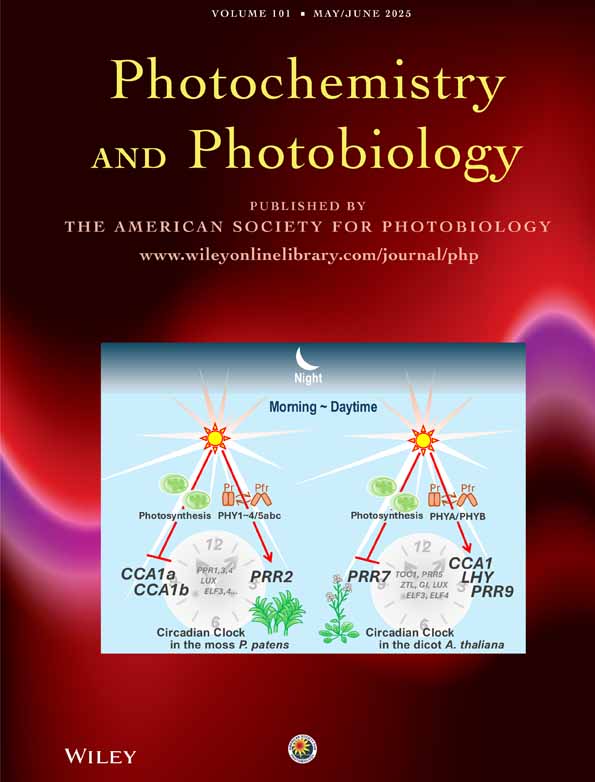Time-Resolved Studies of the Excited-State Dynamics of meso-Tetra(hydroxylphenyl)chlorin in Solution
Abstract
Abstract— Meso-tetra(hydroxyphenyl)chlorin (m-THPC) is a new photosensitizer developed for potential use in photodynamic therapy (PDT) for cancer treatment. In PDT, the accepted mechanism of tumor destruction involves the formation of excited singlet oxygen via intermolecular energy transfer from the excited triplet-state dye to the ground triplet-state oxygen. Femtosecond transient absorption measurements are reported here for the excited singlet state dynamics of m-THPC in solution. The observed early time kinetics were best fit using a triple exponential function with time constants of 350 fs, 80 ps and 3.3 ns. The fastest decay (350 fs) was attributed to either internal conversion from S2 to S1 or vibrational relaxation in S2. Multichannel time-resolved absorption and emission spectroscopies were also used to characterize the excited singlet and triplet states of the dye on nanosecond to microsecond time scales at varying concentrations of oxygen. The nanosecond time-resolved absorption data were fit with a double exponential with time constants of 14 ns and 250 ns in ambient air, corresponding to lifetimes of the S1 and T1 states, respectively. The decay of the T1 state varied linearly with oxygen concentration, from which the intrinsic decay rate constant, ki, of 1.5 × 106 s−1 and the bimolecular collisional quenching constant, kc, of 1.7 × 109M−1 s−1 were determined. The lifetime of the S1 state of 10 ns was confirmed by fluorescence measurements. It was found to be independent of oxygen concentration and longer than lifetimes of other photosensitizers.




